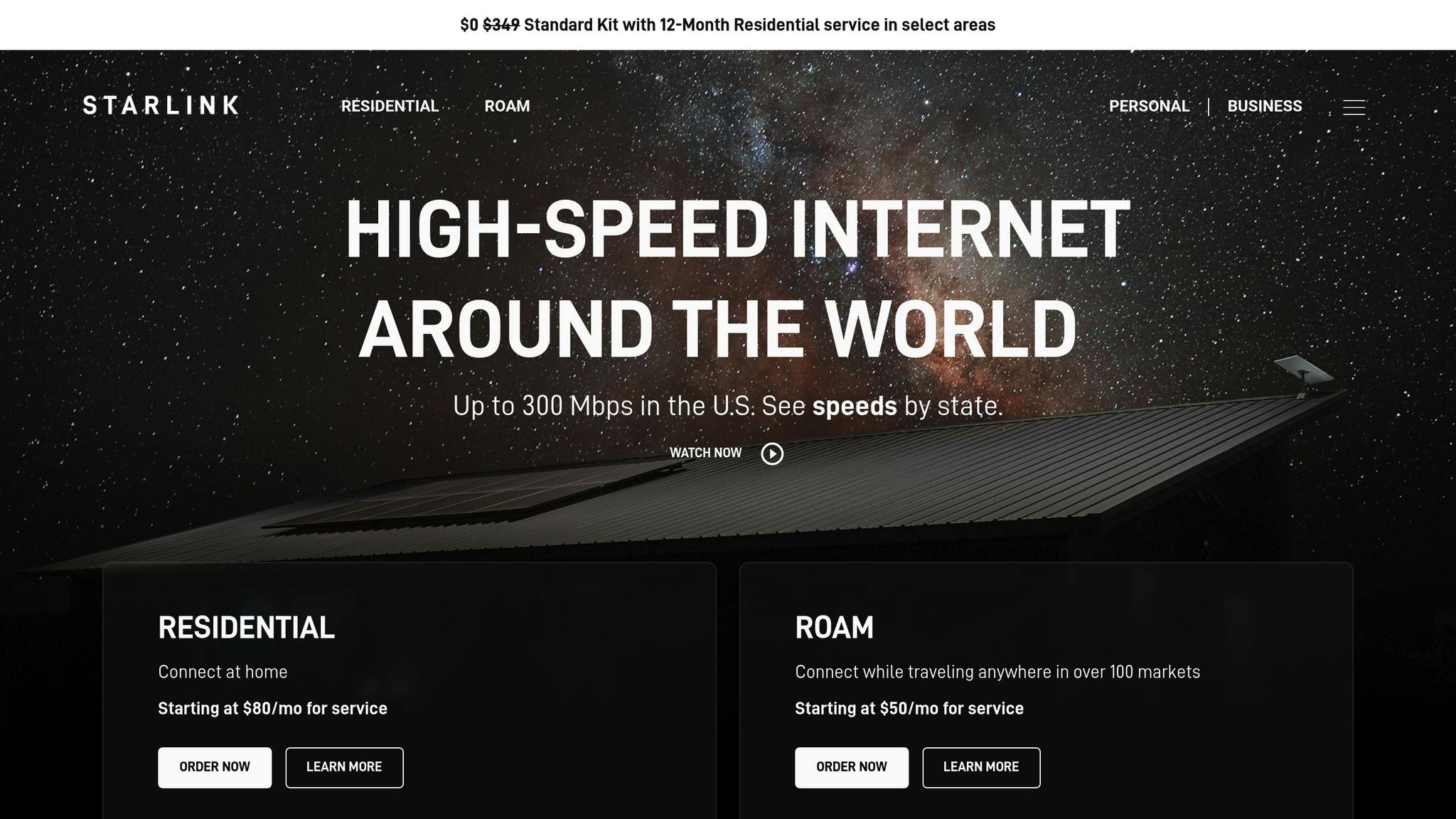Investor Dilution vs. Equity Growth: Key Differences
Explore how investor dilution and equity growth impact pre-IPO investments, using real-world examples to highlight their significance.

Investor dilution and equity growth are two major factors that shape your pre-IPO investment returns. Here's a quick breakdown:
- Investor dilution reduces your ownership percentage when new shares are issued, usually during funding rounds or through convertible securities.
- Equity growth increases the overall value of the company, potentially raising the worth of your shares even if your ownership percentage shrinks.
For example, companies like SpaceX have undergone multiple funding rounds, diluting early investors. However, its valuation has soared - making those smaller stakes highly valuable. A $10,000 investment in SpaceX's early days could now be worth around $129 million.
Key Takeaways:
- Dilution happens during funding rounds, reducing control and voting power.
- Growth offsets dilution if the company's valuation increases significantly.
- SpaceX example: Despite dilution, its growth in areas like Starlink and reusable rockets has delivered massive returns.
Bottom Line: Focus on a company’s growth potential over time. Dilution matters, but it’s often a small price to pay for investing in high-growth companies like SpaceX.
How do shares, dilution and equity really work?
What Is Investor Dilution?
Investor dilution happens when your ownership percentage in a company decreases due to the issuance of new shares of stock. For instance, if you own 10% of a company with 1,000 shares and the company issues 500 additional shares, your ownership drops to 6.67%.
Derek Gallagher, Head of Cap Table Management at J.P. Morgan, explains it this way:
"Imagine your company as a pie. When you bring in new investors, you're effectively slicing the pie into more pieces, which means each existing piece becomes slightly narrower."
This reduction in ownership affects everyone - founders, employees, and early investors alike.
How Investor Dilution Works
Investor dilution can occur in several ways as a company grows. The most common scenario is during equity funding rounds, where new shares are sold to investors. It can also happen through convertible securities like SAFEs (Simple Agreement for Future Equity) or convertible notes.
Take the example of a founder who starts with 10,000 shares, representing 100% ownership. After issuing new shares in successive funding rounds - 5,000, 7,500, and then 10,000 - their ownership shrinks to 67%, 44%, and eventually 31%.
Convertible instruments also play a role in dilution. For example, if an investor puts $100,000 into a SAFE with a 20% conversion discount and the next funding round values shares at $1.00 each, the conversion price drops to $0.80 per share. This results in the investor receiving 125,000 shares instead of 100,000.
The timing and structure of these conversions can significantly influence your final ownership stake, especially since market conditions during conversion often come into play.
| Funding Stage | Typical Dilution Range |
|---|---|
| Seed | 10% - 25% |
| Series A | 20% - 30% |
| Series B | 15% - 30% |
| Series C and later | Highly variable |
Dilution Risks in Pre-IPO Companies
For pre-IPO companies, the risks of dilution are particularly pronounced. Companies like SpaceX, which remain private for extended periods, often undergo multiple funding rounds before going public. Each round can further dilute existing shareholders.
This extended private phase can lead to cumulative dilution. For example, research from Carta shows that seed rounds typically result in about 20% dilution. Meanwhile, Index Ventures found that founders lose an average of 28% ownership between Seed and Series A rounds alone. Over time, these effects add up, significantly reducing ownership stakes.
One major risk of dilution is the potential loss of control. As ownership percentages shrink, so does voting power and influence over company decisions. Another concern is earnings dilution - when new shares are issued, earnings per share decrease, which can impact how others perceive the value of your investment, especially as the company approaches its IPO.
Ian Foley, a seasoned startup expert and venture capitalist, offers this advice:
"Only take as much capital as you think you really need."
What Is Equity Growth?
Equity growth refers to the increase in the value of your ownership stake over time. For example, as SpaceX expands and its overall valuation rises, the worth of your shares can grow - even if dilution occurs. Essentially, the growth in equity can offset the impact of dilution by increasing the overall value of your stake. Let’s take a closer look at what drives this growth.
What Drives Equity Growth
Several factors fuel equity growth, especially in a company like SpaceX:
- Technological advancements: SpaceX’s reusable rocket technology has completely changed the space industry, leading to significant valuation increases.
- Market expansion: Consider Starlink, SpaceX’s satellite internet service. With 2.7 million subscribers and projected 2024 revenue of $6.6 billion, it’s a clear example of how expanding into new markets can drive growth.
- Strategic partnerships and contracts: Collaborations like SpaceX’s $2.9 billion contract with NASA for the Artemis human landing system highlight the importance of partnerships. Missions such as the SpaceX Crew-9, which returned to Earth after a nine-month stay at the International Space Station, showcase the steady revenue generated through these agreements.
- Broader market opportunities: The global space economy is expected to hit $1.8 trillion by 2035. SpaceX has positioned itself as a dominant player, handling about 65% of all licensed commercial launches in the U.S. since its inception.
- Revenue diversification: In 2023, SpaceX reported $8.7 billion in revenue, with $4.1 billion from Starlink and $3.5 billion from launch services. This balanced revenue mix not only supports growth but also reduces risk.
Risk and Reward in Equity Growth
While the potential for equity growth is immense, it comes with notable risks and trade-offs.
The rewards can be staggering. For instance, a $10,000 Series A investment in SpaceX back in December 2002 could grow to approximately $129 million by June 2025 - a return of 12,915x, or an annualized rate of about 52.4%.
However, investing in private companies like SpaceX isn’t without challenges:
- Uncertainty: Private firms face hurdles such as fierce competition, regulatory changes, and execution risks. Additionally, they offer less financial transparency than public companies, making performance evaluations more complex.
- Liquidity issues: Unlike public markets, private companies don’t provide the same flexibility for selling shares. Until an exit event occurs, such as an IPO or acquisition, equity growth remains mostly theoretical.
- Market conditions and timing: The timing of IPOs or acquisitions significantly affects valuations. For instance, though IPOs raised nearly $460 billion globally in 2021, market shifts can quickly change exit opportunities. Valuations can also fluctuate; while SpaceX’s valuation reached around $350 billion in its latest funding round, such numbers can vary widely between funding events.
Despite these risks, the allure of equity growth remains strong. Success stories like early investments in Facebook and Uber continue to demonstrate the potential for extraordinary returns.
Investor Dilution vs. Equity Growth: Main Differences
Understanding how dilution and equity growth interact is crucial for evaluating pre-IPO opportunities, especially in cases like SpaceX's extended private phase. While these concepts might seem at odds, they often work together and can both benefit investors under the right circumstances.
The primary difference comes down to what each concept affects. Dilution reduces your ownership percentage, while equity growth increases the total value of your investment. Even if your ownership stake decreases, the overall growth in value can more than make up for it. Here's a breakdown of their main differences.
Side-by-Side Comparison: Dilution vs. Growth
This table highlights how these two forces differ across key factors for investors:
| Feature | Investor Dilution | Equity Growth |
|---|---|---|
| Ownership Percentage | Shrinks when new shares are issued | Can stay the same or decrease with new shares |
| Share Value | May rise if the company’s value grows | Increases as the company’s valuation grows |
| Typical Triggers | Fundraising rounds, employee stock options, convertible securities | Revenue growth, market expansion, strategic partnerships |
| Control Impact | Reduces voting power and decision-making influence | No direct impact on control |
| Investment Outcome | Lower ownership but potentially higher total value | Higher overall investment value |
How This Affects Investment Decisions
Savvy investors focus on the combined effect of both dilution and equity growth rather than isolating one from the other. As famously stated:
"I'd rather have a small piece of a big pie than a large piece of nothing!" - M. Volker
This perspective is especially relevant when analyzing pre-IPO opportunities. For example, a $10,000 investment in the S&P 500 from December 2002 to June 2025 would have grown to around $90,375, reflecting an annualized return of 10.36%.
When evaluating investments, consider these practical points:
- Analyze the company’s growth trajectory. Companies with aggressive market expansion plans often generate enough value to offset dilution effects.
- Understand the funding environment. Industries like space technology frequently require multiple funding rounds, which may lead to further dilution.
-
Align with your timeline and risk tolerance. As fund manager Ben Meng from Franklin Templeton explains:
"As companies stay private longer, more investors are looking to get in at the pre-IPO stage, as that's when most of the wealth creation happens." - Ben Meng
At the same time, experienced investor Ed Roman advises caution:
"If you are a new investor, you're going to want to see many deals before pulling the trigger on any of them. Try to learn as much as you can about the market before investing." - Ed Roman
While dilution reduces your stake, strong equity growth can significantly boost the overall value of your investment. Successful pre-IPO strategies often involve accepting dilution as part of the process while targeting companies with robust growth potential. This approach is particularly relevant when assessing SpaceX pre-IPO investments.
What This Means for SpaceX Pre-IPO Investors

SpaceX demonstrates how the interplay between dilution and equity growth can lead to impressive returns. For those evaluating pre-IPO opportunities like SpaceX, it's important to grasp how multiple funding rounds may dilute ownership, yet significant valuation growth can more than make up for it.
SpaceX's Past Funding Rounds and Dilution Effects
Over the years, SpaceX has raised $7.2 billion through 40 funding rounds, resulting in dilution for early investors. But dilution is only part of the equation. To put things in perspective, consider this: a $10,000 investment in the S&P 500 (with dividends reinvested) would have grown to about $90,375 by June 2025. In comparison, SpaceX investments have far outpaced those returns, even with dilution factored in.
The current ownership structure reflects these dynamics. Elon Musk holds around 54% of SpaceX's equity and controls 78% of its voting rights. Major institutional investors, including Alphabet, own significant stakes, with Alphabet's share estimated at roughly 7.5%. Musk himself has acknowledged the challenges SpaceX faced in its early days:
"In the beginning, we knew nothing about rockets, and our first three Falcon 1 missions failed, nearly bankrupting us. We barely survived with the fourth launch - if it had failed, the company would have collapsed."
Despite the dilution experienced over time, SpaceX's rapid growth has consistently bolstered investor value.
Growth Potential in SpaceX and Starlink

The conversation around dilution becomes even more compelling when you consider SpaceX's equity growth, largely fueled by Starlink. In 2024, SpaceX reported $14.2 billion in total revenue - a 63% year-over-year increase - with Starlink contributing $7.7 billion, or 58%, of that figure. Starlink's subscriber base surged from just 10,000 beta users in 2021 to an impressive 4.6 million by 2024, helping SpaceX achieve a valuation of $360 billion by the end of 2024.
Looking to the future, ARK Investment Management estimates that SpaceX's enterprise value could climb to about $2.5 trillion by 2030. Technological advancements also play a key role in this growth. For instance, the reusable Falcon 9 rocket has completed over 260 successful re-flights out of 315 launches, slashing satellite launch costs from $400 million to $62 million. Revenue from launch services not only sustains ongoing operations but also supports SpaceX's efforts to develop even more advanced and efficient spacecraft.
For pre-IPO investors, these factors highlight an important takeaway: while dilution is an inherent part of private funding rounds, the potential for long-term equity growth is substantial. With projections that the global space industry could generate over $1 trillion in revenue by 2040 and the possibility of a Starlink IPO within the next three to four years, the prospects for growth appear to outweigh any short-term concerns about dilution. Currently, SpaceX's valuation is estimated to range between $127 billion and $150 billion, underscoring its strong market position.
For those interested in exploring SpaceX's funding dynamics and pre-IPO opportunities further, additional resources are available at the SpaceX Stock Investment Guide.
Conclusion
Balancing investor dilution with equity growth is a key consideration in pre-IPO investing. While dilution reduces your ownership percentage, the potential for equity growth can make even a smaller stake in a thriving, high-value company far more rewarding than a larger stake in one with limited growth.
Take SpaceX as an example. Despite experiencing dilution across multiple funding rounds, the company's remarkable growth has transformed that dilution into substantial returns, outperforming traditional markets.
When evaluating opportunities, focus on a company’s ability to grow rather than just the risk of dilution. Consider whether the capital raised will be channeled effectively into areas like revenue generation, market expansion, or product development. For SpaceX, funding has driven advancements in reusable rocket technology and boosted the user base for Starlink, showcasing how strategic investment can fuel extraordinary progress.
Smart pre-IPO investors view dilution as a necessary step toward significant growth. Companies that demonstrate strong revenue generation, clear profitability paths, and growing market opportunities make the dilution worthwhile.
To refine your approach, model various scenarios to weigh dilution against growth potential. Tools like the SpaceX Stock Investment Guide can help you navigate these complexities and make more informed investment choices.
FAQs
How can investors assess if a company's growth potential outweighs the risks of dilution?
To determine if a company's growth potential outweighs the risks of dilution, investors need to take a close look at valuation trends, growth strategies, and how issuing new shares could affect ownership stakes. Here are a few key points to keep in mind:
- Can the company grow its earnings per share (EPS) even with dilution?
- Is the capital raised being put to work in ways that will fuel long-term growth?
- Does the dilution support strategic goals that could boost overall value?
It’s also important to pay attention to how the company communicates its funding plans. Transparency, along with safeguards to protect shareholder interests, can help reduce potential risks. By carefully balancing these considerations, investors can decide if the potential for equity growth is worth the trade-off of dilution.
How can pre-IPO investors reduce dilution while maximizing their equity growth?
Pre-IPO investors looking to safeguard their equity and encourage its growth have several strategies to consider. One effective method is raising capital at higher valuations. By doing so, companies can issue fewer shares to secure the same level of investment, which helps maintain ownership percentages. Another option is leveraging financial tools like convertible notes or SAFEs, which postpone dilution until later funding stages.
Investors can also protect their equity by targeting businesses with well-defined growth strategies and negotiating terms that emphasize equity preservation. Joining strategic funding rounds can be a smart move as well, as it can fuel the company’s expansion and, in turn, enhance the value of shareholders' stakes. Finally, monitoring dilution closely during every funding round is crucial to ensuring ownership levels are not unnecessarily diminished over time.
How do funding rounds and market conditions influence investor dilution and equity growth in a company like SpaceX?
The timing of funding rounds and the state of the market are key factors that shape investor dilution and equity growth. For instance, early funding rounds, such as Series A, often come with higher dilution - around 20% - because the company is still in the process of proving its value. As businesses progress to later rounds, like Series F, dilution typically drops to about 10%, thanks to higher valuations and a track record of solid performance.
Market conditions also play a big role. In strong markets, when investor demand is high and the economy is thriving, companies often secure higher valuations. This not only reduces dilution but also boosts equity growth potential. On the flip side, during economic slumps or when investor interest wanes, companies may have to settle for lower valuations. This can result in more dilutive rounds and slower equity growth. For companies like SpaceX, understanding these market dynamics is essential for making savvy investment decisions in the private equity world.
Comments ()